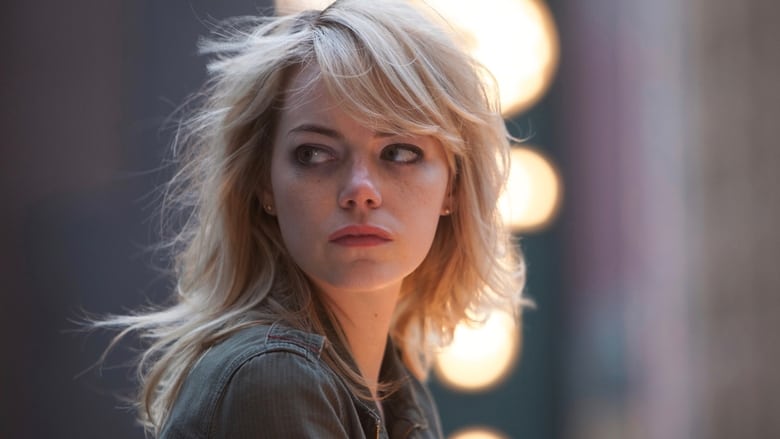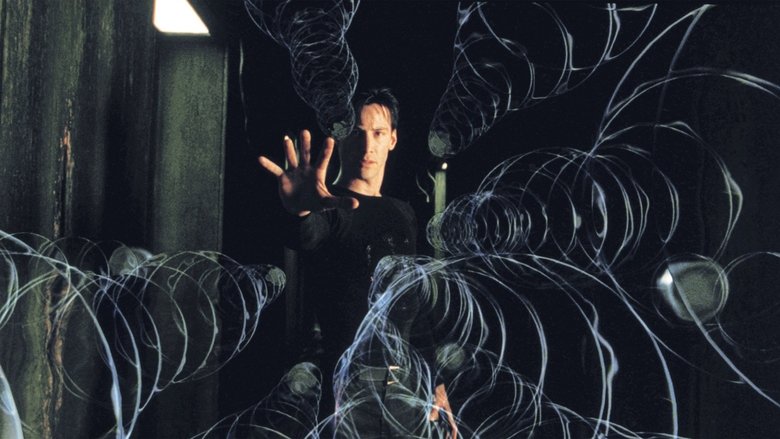Top films by directors who revolutionized hollywood
Explore groundbreaking movies that reshaped the cinematic landscape. These films represent pivotal moments led by visionary directors who dared to challenge the status quo.


Hollywood's history is punctuated by moments of profound change, often driven by directors who possessed a unique vision and the courage to pursue it. These are the filmmakers who didn't just tell stories; they reinvented how stories could be told on screen, pushing the boundaries of narrative structure, visual language, and thematic depth.
Think of Orson Welles, whose Citizen Kane arrived like a thunderclap in 1941, shattering conventional linear storytelling and introducing techniques like deep focus cinematography and complex sound design that are still studied today. Or Francis Ford Coppola, who brought unprecedented realism and epic scope to the crime genre with The Godfather, fundamentally altering audience expectations for dramatic filmmaking.
Later decades saw directors like Martin Scorsese delve into the raw, often uncomfortable realities of urban life, shaping the modern crime drama. The late 20th century brought innovators like Quentin Tarantino, whose non-linear narratives, sharp dialogue, and genre-bending style became instantly iconic, and David Fincher, known for his meticulous craft and dark, atmospheric thrillers. Even the turn of the millennium brought revolutions, with the Wachowskis redefining action and sci-fi with The Matrix's philosophical depth and groundbreaking visual effects.
More recently, international directors like Bong Joon-ho have demonstrated how films outside the traditional Hollywood system can still deliver powerful, globally resonant stories that challenge genre norms and spark vital conversations, as seen with the history-making Parasite.
Each film on this list, and the director behind it, represents a significant evolution in filmmaking. They are testaments to the power of a singular artistic voice to inspire, provoke, and ultimately, change the course of cinema.
10. Parasite (2019)
Bong Joon-ho's Parasite made history in 2020 by becoming the first non-English language film to win the Academy Award for Best Picture, a truly revolutionary moment for Hollywood's global perspective. This darkly comedic thriller masterfully blends genres and tackles themes of class inequality with razor-sharp precision and surprising twists. Bong Joon-ho's meticulous direction controls the film's shifting tones and spatial dynamics within the contrasting homes of the two families. The film's title has multiple meanings, referring not only to the literal sense but also to the idea that different classes are parasitic upon each other in a flawed system. Its unprecedented success broke down barriers and proved that subtitles are no impediment to a powerful, universally resonant story captivating audiences and critics alike on the world stage.

9. Blade Runner (1982)
Ridley Scott's Blade Runner, released in 1982, was initially misunderstood but has grown to become one of the most influential science fiction films ever made, revolutionizing the visual language of the cyberpunk genre. Its detailed, rain-soaked, futuristic Los Angeles created a benchmark for dystopian urban environments in cinema. The film's exploration of complex philosophical questions about humanity and identity was ahead of its time. The film famously has multiple versions, due to studio interference and Scott's later desire to restore his artistic vision, each offering a slightly different experience. The painstaking set design and visual effects created a world that felt lived-in and authentic, proving that science fiction could be both visually stunning and intellectually challenging, deeply impacting future sci-fi aesthetics.

8. Fight Club (1999)
David Fincher solidified his reputation as a master of dark, stylish, and thought-provoking cinema with Fight Club in 1999. Though initially divisive and not a massive box office hit, it gained a massive cult following on DVD and is now regarded as one of the most influential films of its era. Fincher's distinct visual style, characterized by gritty realism, innovative use of CGI (like the IKEA catalog scene), and complex editing, perfectly complements the film's themes of consumerism, identity, and rebellion. The film's opening sequence, a journey through the narrator's fear center in the brain, was a groundbreaking use of CGI at the time, setting the tone for the film's unconventional nature. Fight Club's impact on film editing and visual storytelling is undeniable.

7. Birdman or (The Unexpected Virtue of Ignorance) (2014)
Alejandro G. Iñárritu's Birdman, released in 2014, won the Academy Award for Best Picture and was celebrated for its audacious technical achievement. The film is edited to appear as one continuous, unbroken take, creating an incredibly immersive and claustrophobic experience that mirrors the protagonist's state of mind. This required meticulous planning, precise choreography of actors and camera, and seamless hidden cuts. Cinematographer Emmanuel Lubezki was crucial to achieving this effect, earning his first of three consecutive Oscars for his work. The film's blend of dark comedy, drama, and magical realism, coupled with its technical wizardry, was a bold statement about performance, criticism, and the pressures of Hollywood, demonstrating a fearless approach to form.

6. The Matrix (1999)
The Wachowskis (Lana and Lilly) fundamentally changed action and science fiction cinema with The Matrix in 1999. This film wasn't just a box office hit; it was a cultural phenomenon that blended philosophy, martial arts, anime, and cutting-edge visual effects like never before. The concept of 'bullet time,' where the camera appears to move at normal speed through a slow-motion scene, was revolutionary and instantly became an iconic visual trope, widely imitated afterwards. The film's costume design, particularly the long black coats and sleek sunglasses, became instantly recognizable and highly influential in popular culture. The Matrix pushed the boundaries of what was possible with visual effects and set a new standard for sci-fi action, proving that intelligent, complex ideas could resonate with a mass audience.

5. Taxi Driver (1976)
Martin Scorsese is a titan of American cinema, and Taxi Driver is one of his defining works. Released in 1976, it's a raw, unflinching character study of urban alienation and loneliness that became a cornerstone of the New Hollywood movement. Robert De Niro's portrayal of Travis Bickle is iconic, embodying the simmering rage and disconnect of a post-Vietnam America. Scorsese's dynamic camera work and use of color (or lack thereof in the gritty cityscapes) perfectly capture Travis's psychological state. The famous "You talkin' to me?" scene was completely improvised by De Niro; the script only said "Travis looks in the mirror." The film's controversial themes and ending sparked considerable debate but cemented Scorsese's reputation as a fearless storyteller and a master of urban realism.
4. Apocalypse Now (1979)
Francis Ford Coppola's second entry on this list is a testament to a director pushing the boundaries of filmmaking and sanity. The production of Apocalypse Now in the Philippine jungle was legendary for its difficulty, often mirroring the chaos depicted on screen. Coppola famously said, "My film is not about Vietnam, it is Vietnam." The film's audacious scope, surreal atmosphere, and exploration of the psychological toll of war were unlike anything seen before. Marlon Brando's performance as Colonel Kurtz was largely improvised, and his scenes were shot after significant challenges with his preparation and the script. The film's use of sound, particularly the helicopter sound design and the use of The Doors' "The End," was groundbreaking and immersive. It's a powerful, unsettling epic that redefined the war film.

3. Pulp Fiction (1994)
Quentin Tarantino exploded onto the scene with Pulp Fiction in 1994, and Hollywood was never quite the same. This film is a masterclass in non-linear narrative, witty, stylized dialogue, and genre-bending cool. Tarantino revived careers (hello, John Travolta!) and introduced the world to his unique blend of pop culture references, dark humor, and unexpected violence. The film's fragmented structure, with seemingly unrelated stories intertwining, was revolutionary for mainstream cinema at the time. The famous dance scene with Travolta and Uma Thurman wasn't originally in the script; Tarantino added it because he wanted a scene inspired by Jean-Luc Godard's Bande à part. Pulp Fiction proved that unconventional storytelling could be incredibly engaging and commercially successful, paving the way for countless independent films.

2. The Godfather (1972)
Francis Ford Coppola's masterpiece is a cinematic touchstone that redefined the crime genre and elevated filmmaking as an art form within the studio system. Released in 1972, it brought a new level of realism, moral ambiguity, and operatic scale to Hollywood storytelling. Coppola fought hard for his artistic vision, from casting Al Pacino (whom the studio initially didn't want) to insisting on shooting in period locations. The film's intimate portrayal of family alongside brutal violence was shocking yet compelling. Its iconic score by Nino Rota, though initially disqualified from Oscar contention due to prior use in an Italian film, is instantly recognizable and deeply embedded in cinematic history. The Godfather didn't just influence crime films; it showed Hollywood that complex, character-driven dramas could be massive commercial successes.

1. Citizen Kane (1941)
Orson Welles' debut feature is often cited as the greatest film ever made, and for good reason! It completely rewrote the cinematic rulebook in 1941. Welles utilized groundbreaking techniques like deep focus cinematography (where foreground and background are equally sharp), non-linear storytelling, and innovative sound design that were virtually unheard of at the time. The film's narrative, exploring the life of a newspaper tycoon through multiple perspectives, was incredibly complex for its era. Did you know that cinematographer Gregg Toland was so crucial to the look that Welles gave him a shared title card, a highly unusual gesture in Hollywood? Kane's influence on filmmaking is immeasurable, shaping everything from film noir to modern blockbusters.

